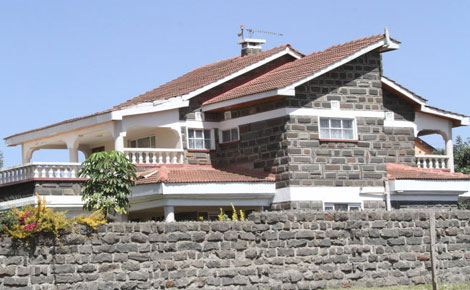
Fifteen years ago, Naka Estate was a lush green expanse of vegetation suitable for grazing animals. It attracted a large number of pastoralists who drove their animals here in search of water and pasture.
Today, Naka is one of the most sought after residential address in Nakuru County with modern and attractive homes.
Sandwiched between Hyrax Hills Museum to the north, and Lake Nakuru National Park to the south, residents in the estate enjoy a panoramic view of the pink-stained edges of Lake Nakuru.
The lake’s shores are reminiscent of the sandy beaches commonly associated with the Coast.
The estate has transformed the face of Nakuru town with posh residential homes, attracting real estate developments in a big way, with houses sprouting like mushrooms in the field.
Naka, named after the Nakuru Kalenjin Association (Naka) is located five kilometres from the town along the Nairobi–Nakuru road.
With the influx of people to Nakuru in the late 1980s, the demand for houses led to the fast pace of development in Naka and other estates.
Modern housing
It was the need for modern housing that led members of the association to sub-divide the land for the purpose of expansion.
The estate is now guaranteed a frequent flow of water and ample security bearing in mind that it is next to the famous Section 58 Police Dog Training Unit and few kilometres from Nakuru’s State house.
With the demand so high today, one would have to spend a fortune to acquire a 50 by 100 foot plot in the area. The prices range from between Sh5 to Sh10 million.
Ferdinand Wafula, a resident who has seen the estate grow from a forlorn grazing land to a residential estate notes that the demand for rental units has shot up in the last seven years.
Wafula also notes that the estate is gradually competing with older but posher estates like Milimani, believed to be one of the most sought after address in the region.
“Many people have been hunting for land or houses to buy here. The demand has seen a price explosion in the recent past,” says Wafula.
Stay informed. Subscribe to our newsletter
He adds that besides being a solution to the high demand for classy and modern houses, the estate is giving Nakuru town an appealing look.
When approaching the town from the east on the Nairobi highway, one cannot fail to notice the beautiful houses on the left side of the road.
“Besides being a solution to the high demand for houses and giving a good returns on investment, the estate gives our town an appealing look attracting more investors, which is a positive for our economy,” he adds.
Wafula says that seven years ago in Lower Naka, a plot measuring 50ft by 100ft was going for Sh800,000 but now it can cost one over Sh6 million.
Another resident, Joseph Kariuki, says that the price of plots in the area has gone up since Nakuru was declared the county headquarters.
Change of status
The status of the county improved tremendously after the United Nations Habitat Report of 2012 declared Nakuru town as one of fastest growing cities in Africa.
Kariuki, who resides in the part of Section 58 that borders Naka estate says that back in 1990’s a 50 by 100ft plot was going for Sh80,000 but is currently selling at over Sh4million.
The booming real estate business has attracted both local and foreign investors who want to put their money to good use.
Kariuki says that a five-bedroom maisonette rents out at between Sh30,000 and Sh40,000 per month while rent for a two-bedroom flat is between Sh15,000 and Sh25,000, all depending on how far the house is located from the main road.
Kariuki notes that sufficient water is an added advantage for Naka estate, adding that the proposed bypass – that will go through the southern part of the town along the Lake Nakuru fence, will be another advantage to Naka. However, the estate has a number of challenges. One is the presence of wild animals especially monkeys and baboons that stray from the national park to the residential area.
The ‘’unwelcome visitors’ give residents a hard time especially when they jump perimeter fences and climb on top of buildings.
Poor roads and incidents of insecurity also bedevil the estate. This has forced the residents to embrace community policing, which has registered some level of success.
 The Standard Group Plc is a
multi-media organization with investments in media platforms spanning newspaper
print operations, television, radio broadcasting, digital and online services. The
Standard Group is recognized as a leading multi-media house in Kenya with a key
influence in matters of national and international interest.
The Standard Group Plc is a
multi-media organization with investments in media platforms spanning newspaper
print operations, television, radio broadcasting, digital and online services. The
Standard Group is recognized as a leading multi-media house in Kenya with a key
influence in matters of national and international interest.
 The Standard Group Plc is a
multi-media organization with investments in media platforms spanning newspaper
print operations, television, radio broadcasting, digital and online services. The
Standard Group is recognized as a leading multi-media house in Kenya with a key
influence in matters of national and international interest.
The Standard Group Plc is a
multi-media organization with investments in media platforms spanning newspaper
print operations, television, radio broadcasting, digital and online services. The
Standard Group is recognized as a leading multi-media house in Kenya with a key
influence in matters of national and international interest.






